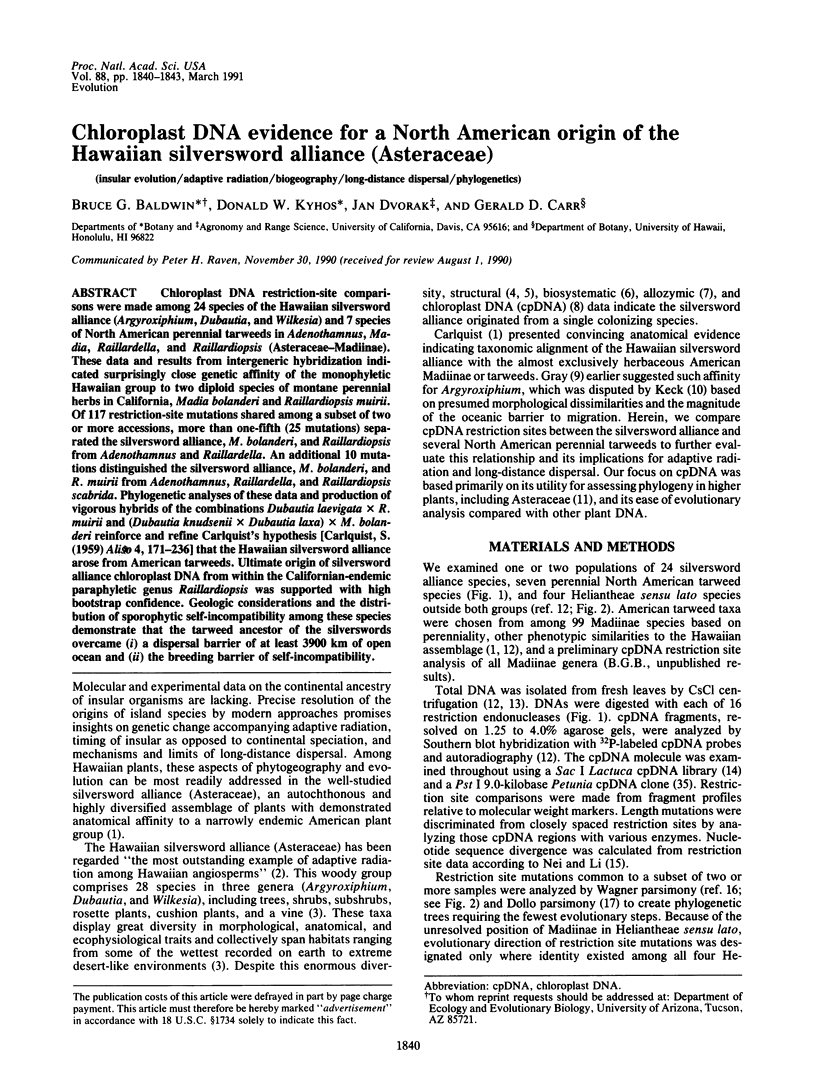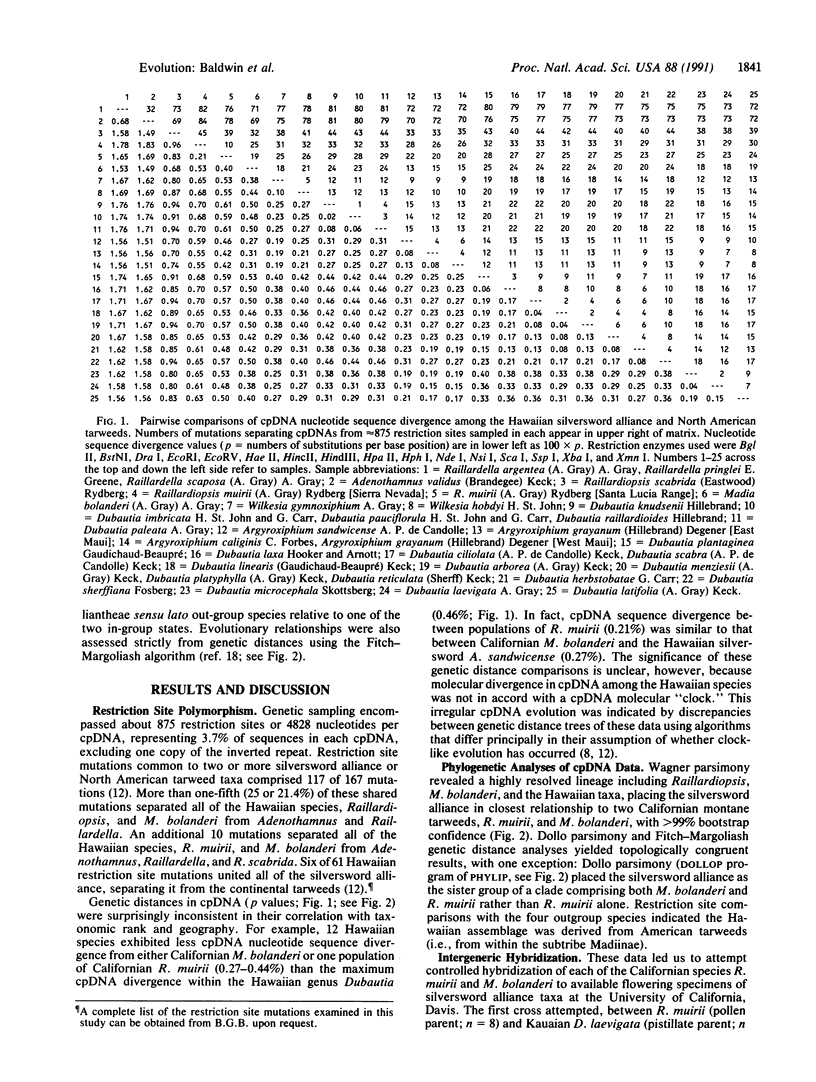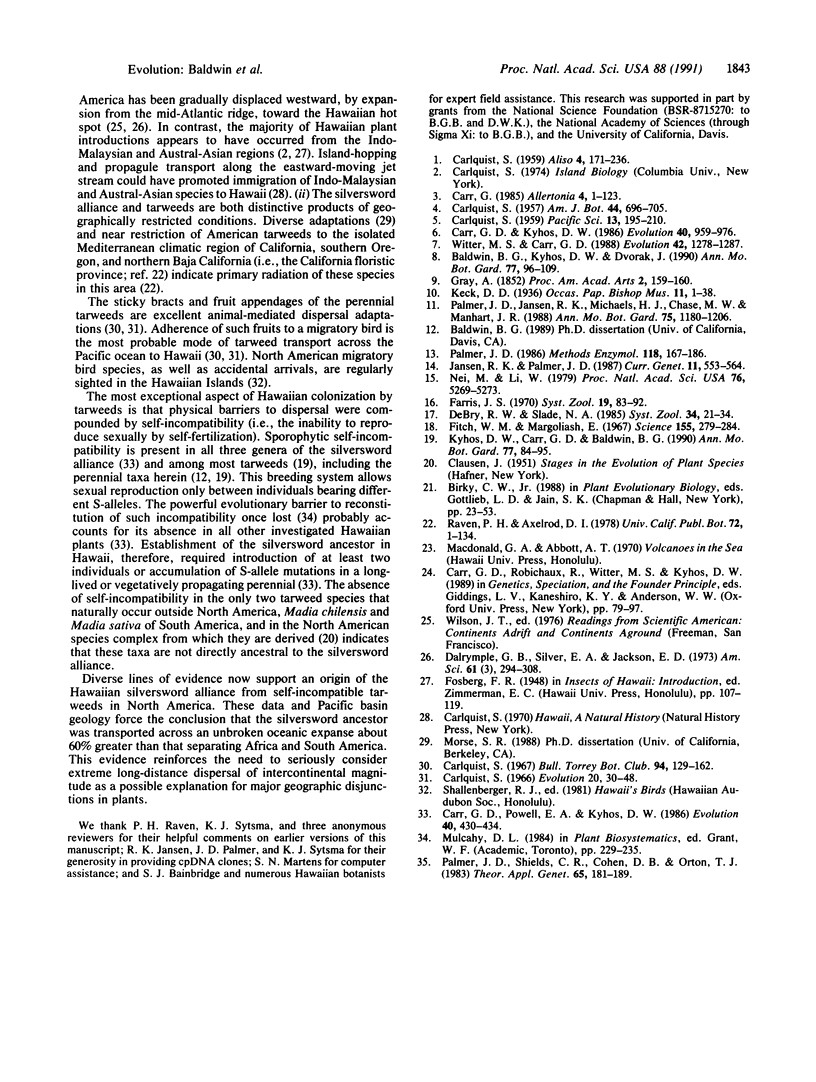Abstract
Chloroplast DNA restriction-site comparisons were made among 24 species of the Hawaiian silversword alliance (Argyroxiphium, Dubautia, and Wilkesia) and 7 species of North American perennial tarweeds in Adenothamnus, Madia, Raillardella, and Raillardiopsis (Asteraceae-Madiinae). These data and results from intergeneric hybridization indicated surprisingly close genetic affinity of the monophyletic Hawaiian group to two diploid species of montane perennial herbs in California, Madia bolanderi and Raillardiopsis muirii. Of 117 restriction-site mutations shared among a subset of two or more accessions, more than one-fifth (25 mutations) separated the silversword alliance, M. bolanderi, and Raillardiopsis from Adenothamnus and Raillardella. An additional 10 mutations distinguished the silversword alliance, M. bolanderi, and R. muirii from Adenothamnus, Raillardella, and Raillardiopsis scabrida. Phylogenetic analyses of these data and production of vigorous hybrids of the combinations Dubautia laevigata x R. muirii and (Dubautia knudsenii x Dubautia laxa) x M. bolanderi reinforce and refine Carlquist's hypothesis [Carlquist, S. (1959) Aliso 4, 171-236] that the Hawaiian silversword alliance arose from American tarweeds. Ultimate origin of silversword alliance chloroplast DNA from within the Californian-endemic paraphyletic genus Raillardiopsis was supported with high bootstrap confidence. Geologic considerations and the distribution of sporophytic self-incompatibility among these species demonstrate that the tarweed ancestor of the silverswords overcame (i) a dispersal barrier of at least 3900 km of open ocean and (ii) the breeding barrier of self-incompatibility.
Full text
PDF



Selected References
These references are in PubMed. This may not be the complete list of references from this article.
- Fitch W. M., Margoliash E. Construction of phylogenetic trees. Science. 1967 Jan 20;155(3760):279–284. doi: 10.1126/science.155.3760.279. [DOI] [PubMed] [Google Scholar]
- Nei M., Li W. H. Mathematical model for studying genetic variation in terms of restriction endonucleases. Proc Natl Acad Sci U S A. 1979 Oct;76(10):5269–5273. doi: 10.1073/pnas.76.10.5269. [DOI] [PMC free article] [PubMed] [Google Scholar]


